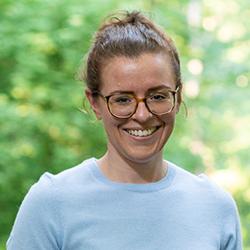I am a developmental biologist and fascinated by the level of precision and robustness underlying early embryogenesis. A single egg cell gives rise to a complex organism with different cell types emerging from lineage-dependent transitions in cellular states. Thus, early embryogenesis requires precise spatiotemporal mechanisms to specify different cellular fates at a given time in a distinct location. Here, I am driven to gain a deeper understanding of how cells in the early embryo acquire and maintain their fate and become what they are.
One cell type that clearly stands out in the developing embryo is the germline. Primordial germ cells (PGCs), the precursor cells of the germline, are set aside from the somatic cells shortly after fertilization of sperm and egg in the early embryo. They later differentiate into sperm and egg that will give rise to the next generation - whereas somatic cells have a limited lifespan.
During my PhD I sought to find out more about the mechanisms maintaining germline identity using the zebrafish model. The timepoint of PGC specification is closely associated with gastrulation and demands migration through extensively developing and differentiating tissues. However, PGCs do not respond to differentiation cues and reach the gonad while they maintain their fate and protect themselves from somatic differentiation. Here, my work shed light on the mechanisms controlling vertebrate PGC fate maintenance by an RNA-binding protein.
A follow-up postdoctoral stay allowed me to gain experience in the mammalian system. While working on energy metabolism of the pluripotent lineage taking advantage of mESCs and the mouse model, I contributed to understand the molecular mechanisms that support the embryo in meeting the higher energy demands for cell proliferation and morphogenesis upon implantation.
In my current postdoctoral work, I am combining my live-cell imaging-based approaches with in vitro human stem cell models to trace the germline as it emerges during early embryogenesis. I seek to close knowledge gaps in the mechanistic understanding of human germline fate specification to gain a comprehensive understanding of how cell fate choices are generally controlled within complex multicellular organisms.


